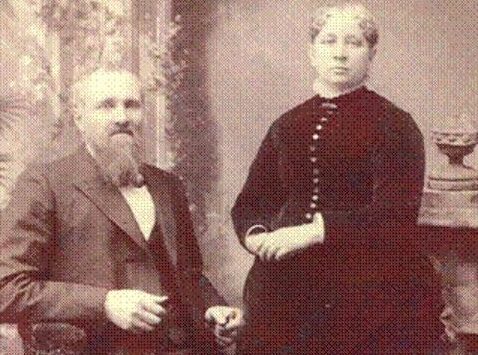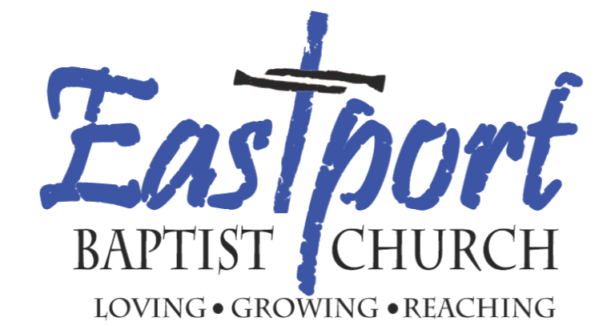The story of Pastor Henry S. Mellon is a story of a farmer turned church planter. It is a story that has been nearly forgotten over the 150 years since he entered his labors as a pioneer pastor. There are currently many gaps in his story and few sources from his own hand. But we do know that at the end of his ministry, an 1897 report in the Michigan Baptist Convention minutes honored this retired pastor as a hero missionary of our state. By the time of that report, ministry and time had taken their toll. Poor health had driven him from ministry, but not before he had helped start at least four churches in the state.

Henry Samuel Mellon was born on September 4, 1832 in New York to Peter Mellon and Reconcile “Chloa” Crane. His father died when he was young, and his mother soon remarried, after which the family moved to Michigan.
In Jackson, Michigan, Henry met Melissa Crane, and they were married in the late 1850s. They would have three children: Willard (1859), Julia Irene (1868), and Ernest (1875). In 1860, Henry was working in a commercial nursery, but we know little about the Mellon family during this decade of the Civil War and its aftermath.
Ministry in Bridgeton
By 1870, the family had moved to the Muskegon area where Henry was farming. Up to this point, we know nothing about Henry’s faith, church involvement, or ministry training. But starting in 1872, a Rev. H. S. Mellon shows up in the Michigan Baptist Convention (MBC) minutes. In 1871, Henry planted a Baptist church in Bridgeton Township in Newaygo. According to a report in the MBC proceedings, the church in Bridgeton consisted of nine members in 1872.
Michigan was still a younger state at this time and had many undeveloped, frontier areas. Baptists numbered around 20,000 in Michigan in 1872, and while 293 Baptist churches had been organized, only 131 had settled pastors. Henry carried out his ministry as a missionary pastor sponsored by the Michigan Baptist Convention and the Women’s Michigan Baptist Home Mission Society. In 1873, he was given $10 for his library by the MBC out of the book fund for pastors. In addition to his pastoral work, Henry also served as the postmaster for Bridgeton, which had a population of 70 people.
Work as a missionary pastor was demanding. While working as postmaster and pastoring the Bridgeton congregation, Henry also often preached at least five times at different places on Sunday. He also had a hand in prayer meetings, monthly covenant meetings (where members of the church would gather to reaffirm their commitment to the Lord and each other), and Sunday schools.
For the year 1876-77, Henry reported that he preached 325 sermons, attended 100 prayer and Bible meetings, made 400 visits, travelled 3,200 miles, saw 20 conversions, baptized 9 people, and brought 10 into membership at his church. He ministered at six or seven separate congregations that year as well. The people he served were typically poor settlers in the Michigan frontier. He recounted once preaching at a schoolhouse in Newaygo County. Several teenage boys between twelve and fourteen years old told him then that they had never heard a sermon before. Sunday to them was just a day with more hunting and fishing.
In 1880, tragedy struck the Mellon family. Diphtheria spread around the village, and four-year-old Ernest came down with the infection and died on March 15, 1880. His death was reported in the proceedings of the Michigan Baptist Convention, which stated, “Bro. Mellon has been burdened in his work by sickness in his family and among the people. Diphtheria removed his youngest child and many others around.”
But the work at Bridgeton continued. During the August 17, 1881 meeting of the White River Baptist Association, Henry preached “on the necessity of going out into the highway and hedges and compelling the people to come in.” He was also scheduled to preach the sermon at the next association meeting the following year.
In that same convention report, Henry stated: “No especial outpouring of the spirit this year, but the same steady zeal and firmness is manifest among his members.” The report went on to describe how the church members, now numbering 72, were determined to build a church building for the congregation. Eight hundred dollars had been pledged, but being too poor to buy all the lumber, they went into the woods, cut down trees, and prepared lumber for the building themselves. Henry helped with the building as he could during the week.
Church Planting in Northern Michigan
For several years, calls for help in the Grand Traverse region of the state had come to the attention of the Michigan Baptist Convention. With the Bridgeton congregation fully settled, Henry Mellon did his part to answer these calls. He made his way north to the village of Eastport. With a population of about 200 people, Eastport was a thriving little town in Northern Michigan. What specifically led the Mellons to Eastport is unknown, but according to the MBC proceedings, Henry helped organize the Eastport Baptist Church in 1884. According to church records, the congregation began with ten members. The Home Missions Society allotted Henry $58.34 that year in support of his ministry.
By 1886, 36 members were worshiping at the First Baptist Church of Eastport. Two were baptized that year, four were welcomed as members by presenting a letter from a previous church, and five were accepted into membership by relating their conversion experience. That same year, on March 24, 1886, Henry married John Pearl and Alice Hadcock. John Pearl owned the General Store the church met in, and Alice was one of the charter members in 1884. In 1887, Henry joined fellow missionary pastor Rev. T Howland of Kalkaska at a meeting of the Women’s Michigan Baptist Home Mission Society. According to the report, they “gave interesting accounts of their fields of labor and the pressing need of money. Our society was grateful to hear announced the fact that the money asked for would be forthcoming.”
In 1888, Henry set out again to help organize more churches in the state. This time, he went east to the Alpena area. While there, he helped organize Plainfield Baptist Church in Hale, MI on October 6, 1889 with 12 members. This church is now Hale Baptist Church. There are also indications that he helped plant Curtisville Baptist Church in South Branch, which is in the same area (although the only date found for this is 1880, which seems an unlikely date given the timeline of his ministry).
By 1892, Henry had completed his work in Alpena and travelled back to Eastport to serve as pastor again. Minutes from a church meeting in 1894 read: “The First Baptist Church of Eastport met for regular covenant meeting at the Parsonage, Saturday July 14, 1894, at 2 o’clock pm with the Pastor as the chair.” Seventeen members and one visitor attended this meeting, and they raised a collection for State Missions of $1.07. The 1894 report from the Michigan Baptist Convention lists 43 members at Eastport during this time.
His Final Years
Sickness and poor health eventually drove Henry to step down from his missionary and pastoral labors in 1895. He returned to Bridgeton in October that year. One of his deacons, R. R. Wilkinson was called and ordained by the church in Eastport and became the next pastor. Soon after, a revival occurred in Eastport where 50 people were baptized and the membership rose from 46 to 98. A Baptist church in Central Lake seems to have been organized out of this revival. It was this report in the 1897 Michigan Baptist Convention proceedings that described Rev. Henry Mellon as “that hero missionary of our state.” After detailing the Eastport revival, the report went on to declare: “So one sows and another reaps.”
Little else is known about Henry Mellon’s life following his return to Bridgeton. His health continued to decline, and he died on January 21, 1905, at the age of 72. During his ministry, he displayed a true missionary heart and courageous dedication. He travelled thousands of miles each year for the sake of the gospel and participated extensively in the Baptist associations of Michigan.
Henry Mellon served as a faithful church planter and pioneer pastor for over 25 years. Yet, his name will not be found in any church history textbooks (though he was mentioned in one sentence in the Centennial History 1836-1936 of the Michigan Baptist Convention). There are no biographies celebrating his ministry. Yet, his legacy was not in his name, but in the souls he served and churches he helped organize. We thank the Lord for many faithful pastors and missionaries from our past like him who labored unknown by men, but known by their God, and now have entered their rest.
A Note on Sources: Most of the information cited about the ministry of Rev. Henry Mellon comes from the Minutes of the Michigan Baptist Convention Proceedings, accessed digitally from the University of Michigan archives in the HathiTrust Digital Library Collection. Not every year is available online, including the minutes from the 1884 and 1889-93 convention meetings. Finding print copies of these minutes might reveal more about Rev. Mellon’s life and ministry. Information about Henry’s early life and several other details come from census records and Michigan vital records accessed online. The photograph of Henry and Melissa is from Eastport Baptist’s historical records. Information about his involvement in organizing Hale Baptist Church was found on their website.








One Response
This is very interesting. Thanks for sharing.